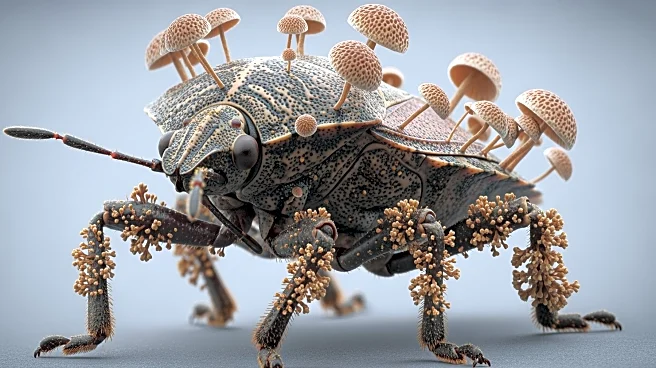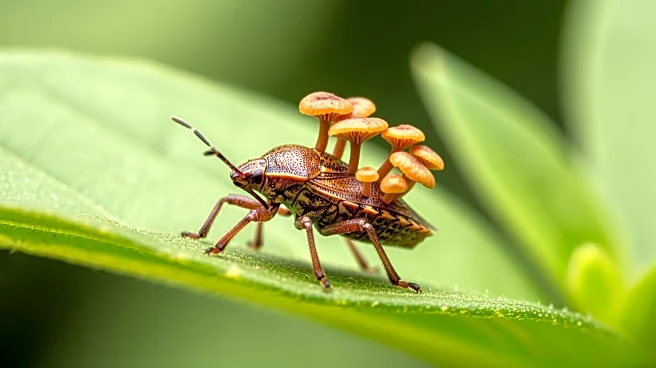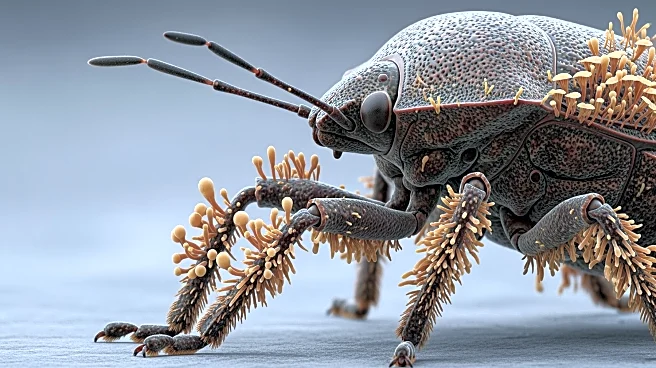What's Happening?
A team of Japanese researchers has discovered that female stinkbugs of the Dinidoridae family possess mobile fungal gardens on their hind legs, rather than the tympanal organs previously believed to be used
for hearing. These organs contain thousands of pores filled with benign filamentous fungi, supported by secretory cells that provide nutrients for fungal growth. This unique adaptation serves as a defense mechanism against parasitic wasps, showcasing an unprecedented form of symbiosis between insects and fungi.
Why It's Important?
This discovery challenges previous assumptions about insect anatomy and behavior, revealing a novel form of symbiosis that could have implications for understanding insect defense mechanisms. The presence of mobile fungal gardens highlights the complexity of ecological interactions and the potential for insects to develop unique adaptations for survival. This finding may influence future research on insect-fungi relationships and contribute to broader ecological studies on symbiotic partnerships.
What's Next?
Further research is needed to explore the ecological and evolutionary implications of this symbiotic relationship. Scientists may investigate how these fungal gardens impact the stinkbugs' survival and reproduction, as well as their interactions with other species. Understanding the mechanisms behind this adaptation could lead to insights into insect defense strategies and the role of fungi in ecological systems.
Beyond the Headlines
The discovery prompts discussions on the ethical considerations of studying and preserving unique insect adaptations. It also highlights the importance of interdisciplinary research in uncovering complex biological phenomena. The stinkbugs' adaptation underscores the resilience and ingenuity of life, encouraging further exploration of symbiotic relationships in nature.












